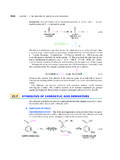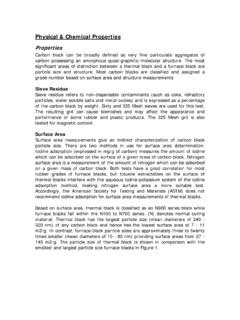Transcription of Assessment report on Ginkgo biloba L., folium
1 30 Churchill Place Canary Wharf London E14 5EU United Kingdom An agency of the European Union Telephone +44 (0)20 3660 6000 Facsimile +44 (0)20 3660 5555 Send a question via our website European Medicines Agency, 2015. Reproduction is authorised provided the source is acknowledged. 28 January 2014 EMA/HMPC/321095/2012 Committee on Herbal Medicinal Products (HMPC) Assessment report on Ginkgo biloba L., folium Based on Article 10a of Directive 2001/83/EC as amended (well-established use) Based on Article 16d(1), Article 16f and Article 16h of Directive 2001/83/EC as amended (traditional use) Final Herbal substance(s) (binomial scientific name of the plant, including plant part) Ginkgo biloba L., folium Herbal preparation(s) Dry extract (DER 35-67:1), extraction solvent: acetone 60% m/m (in accordance with the Ph. Eur. monograph Ginkgo dry extract, refined and quantified 04/2008: 1827) Powdered herbal substance Pharmaceutical form(s) Herbal preparations in liquid or solid dosage forms for oral use.
2 Rapporteur Jacqueline Wiesner Assessor Eva-Maria Eibl Peer-reviewer Olga Palomino Assessment report on Ginkgo biloba L., folium EMA/HMPC/321095/2012 Page 2/116 Table of contents 1. Introduction .. 4 Description of the herbal substance(s), herbal preparation(s) or combinations thereof .. 4 Information about products on the market in the Member States .. 5 Search and Assessment methodology .. 28 2. Data on medicinal use .. 29 Information on period of medicinal use in the European Union .. 29 Information on traditional/current indications and specified substances/preparations .. 29 Specified strength/posology/route of administration/duration of use for relevant preparations and indications .. 30 3. Non-Clinical Data .. 30 Overview of available pharmacological data regarding the herbal substance(s), herbal preparation(s) and relevant constituents thereof.
3 31 Primary 31 Secondary pharmacodynamic .. 33 Safety pharmacology .. 33 Pharmacodynamic interactions .. 35 Overview of available pharmacokinetic data regarding the herbal substance(s), herbal preparation(s) and relevant constituents thereof .. 35 Overview of available toxicological data regarding the herbal substance(s)/herbal preparation(s) and constituents thereof .. 37 Single dose toxicity .. 37 Repeated dose toxicity .. 38 Genotoxicity .. 39 Carcinogenicity .. 39 Reproductive and developmental toxicity .. 40 Local tolerance .. 43 Other special studies .. 44 Overall conclusions on non-clinical data .. 44 4. Clinical Data .. 47 Clinical Pharmacology .. 47 Overview of pharmacodynamic data regarding the herbal substance(s)/preparation(s) including data on relevant constituents .. 47 Overview of pharmacokinetic data regarding the herbal substance(s)/preparation(s) including data on relevant constituents.
4 49 Clinical Efficacy .. 57 Dose response 57 Clinical studies (case studies and clinical trials) .. 57 Clinical studies in special populations ( elderly and children) .. 103 Overall conclusions on clinical pharmacology and efficacy .. 105 5. Clinical Safety/Pharmacovigilance .. 107 Overview of toxicological/safety data from clinical trials in humans .. 107 Patient exposure .. 107 According to the Arzneiverordungs- report 2012 (annual medicines prescription report in Germany published by U. Schwabe and D. Paffrath) the prescription of Ginkgo biloba Assessment report on Ginkgo biloba L., folium EMA/HMPC/321095/2012 Page 3/116 preparations was in total about Mio. Adverse events and serious adverse events and deaths .. 107 Laboratory findings .. 113 Safety in special populations and situations .. 114 Overall conclusions on clinical safety.
5 114 6. Overall conclusions .. 115 Annex .. 116 Assessment report on Ginkgo biloba L., folium EMA/HMPC/321095/2012 Page 4/116 1. Introduction Description of the herbal substance(s), herbal preparation(s) or combinations thereof Herbal substance(s) A monograph on Ginkgo leaf is published in the European Pharmacopoeia (Ph. Eur. 7th edition 2012 ( ), ref. 01/2011:1828). The herbal substance consists of the whole or fragmented, dried leaf of Ginkgo biloba L. The leaf is greyish or yellowish-green or yellowish-brown. The upper surface is slightly darker than the lower surface. The petioles are about 4-9 cm long. The lamina is about 4-10 cm wide, fan-shaped, usually bilobate or sometimes undivided. Both surfaces are smooth, and the venation dichotomous, the veins appearing to radiate from the base; they are equally prominent on both surfaces.
6 The distal margin is incised, irregularly and to different degrees, and irregularly lobate or emarginate. The lateral margins are entire and taper towards the base. Synonyms: Fossil tree, Kew tree, Maidenhair Tree, Yin Xing (whole plant), Yin Xing Ye (leaves) Constituents: (e. g. Chan et al. 2007, van Beek 2000) Terpenes - Triterpenelactones (diterpenes: ginkgolides A, B, C, J ( ) and sesquiterpene: bilobalide (up to )) - Triterpenes (steroids, phytosterols) - Carotenoids - Polyprenols (di-trans-poly-cis-octadecaprenol) concentration ranges from to - Volatile terpenes Flavonoids not less than - Flavanols (catechins) - Flavones (aglycones, monoglycosides and biflavones with a concentration of to ) - Flavonols (the aglycones isorhamnetin, kaempferol, quercetin and myricetin have a concentration of to w/w) Organic acids Polyacetate derived compounds - Alkyl phenolic acids and alkyl phenols (ginkgolic acid, cardanols (approx.))
7 - Long chain hydrocarbons (waxes) - Lipids Others (carbohydrates, miscellaneous organic compounds, inorganic compounds) Assessment report on Ginkgo biloba L., folium EMA/HMPC/321095/2012 Page 5/116 Herbal preparation(s) 1. Ginkgo biloba dry extract is included in the European Pharmacopoeia. Currently the following monograph exists: - Ginkgo dry extract, refined and quantified (Ph. Eur. 7th edition 2012 ( ), ref. 04/2008:1827) This extract contains several chemical constituents, among which the two main constituents flavones glycosides (total ), represented by quercetin, kaempherol and isorhamnetin and terpene lactones (total ), represented by ginkgolides A, B, C ( ) and bilobalide ( ). The content of ginkgolic acids is limited with max. 5 ppm. The limit value of 5 ppm was chosen since it complies with the detection limit recordable by routine methods, thus allowing to assure to a maximum degree removal of these compounds from therapeutically used extracts.
8 2. Powdered herbal substance Combinations of herbal substance(s) and/or herbal preparation(s) including a description of vitamin(s) and/or mineral(s) as ingredients of traditional combination herbal medicinal products assessed, where applicable. The European Union monograph is established on Ginkgo folium and preparations thereof. Information about products on the market in the Member States (Information was collected when drafting of the European Union monograph was started.) Austria: Well-established use 1. Dry extract of Ginkgo biloba leaves (EGb 761); DER 35-67:1; quantified to mg ginkgoflavonglycosides and mg terpene lactones (ginkgolides, bilobalide); extraction solvent acetone 2. Dry extract of Ginkgo biloba leaves standardised to mg ginkgoflavonglycosides and mg terpene lactones (ginkgolides, bilobalide) 3. Dry extract of Ginkgo biloba leaves standardised to mg ginkgoflavonglycosides and mg terpene lactones (ginkgolides, bilobalide) 4.
9 Dry extract of Ginkgo biloba leaves, not further specified 5. Dry extract of Ginkgo biloba leaves; DER 35-67:1; extraction solvent: acetone 60% 6. Dry extract of Ginkgo biloba leaves (EGb 761) standardised to mg ginkgoflavonglycosides and mg terpene lactones (ginkgolides, bilobalide) 7. Dry extract of Ginkgo biloba leaves (EGb 761) standardised to mg ginkgoflavonglycosides and mg terpene lactones (ginkgolides, bilobalide) 8. See 6 9. Dry extract of Ginkgo biloba leaves (EGb 761) standardised to mg ginkgoflavonglycosides and mg terpene lactones (ginkgolides, bilobalide) 10. One coated tablet contains 20 mg dry extract of Ginkgo biloba leaves standardised to 4,8 mg ginkgoflavonglycosides Assessment report on Ginkgo biloba L., folium EMA/HMPC/321095/2012 Page 6/116 Since when on the market? Pharmaceutical form Posology/daily dosage 1.
10 2000 film-coated tablets containing 80 mg extract 2-3 times daily The amount of tablets per day is not stated 2. 1993 film-coated tablets containing 40 mg extract 2 times daily 1 tablet; if required the dosage can be increased to 3 times daily 1 tablet 3. 1993 drops 1 ml solution contains 40 mg extract 2 times daily 1 ml; if required the dosage can be increased to 3 times daily 1 ml 4. 1999 film-coated tablets containing 50 mg dry extract 3 times daily 1 tablet; duration of treatment comply with the disease pattern; should last min. 6-8 weeks 5. 1999 oral solution 100 ml solution contain g extract 2 times daily 1 teaspoon; duration of treatment comply with the disease pattern; should last 6-8 weeks 6. 1999 film-coated tablets containing 40 mg extract 3 times daily 1 tablet during 8-12 weeks initial treatment: 3 times daily 1 tablet for 8-12 weeks follow-up treatment: if required 2 times daily 1 tablet dementia syndrome: 3 times daily 1-2 tablets 7.














